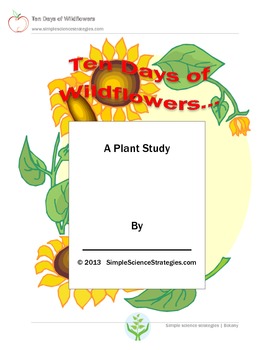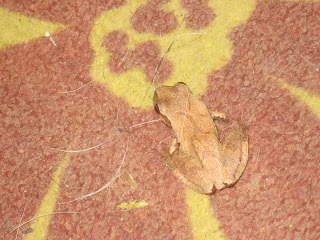Exploring Creation with Zoology I: Flying Creatures of the Fifth Day
 |
| $39 at Barnes & Noble (click here). |
Exploring Creation with Zoology 1: Flying Creatures of the
Fifth Day, by Jeannie
Fulbright (Apologia Science, Young Explorers Series) is written for use with
children grades K-6. It covers all the flying creatures: birds, insects, flying
reptiles (pterosaurs), and bats.
The course includes several components:
The course includes several components:
- The textbook (required)
- The notebooking journal (highly recommended)
- Lab kit (optional)
- Daily lesson plans (optional)
- Lapbook CD-ROM (optional)
- Lapbook package CD-ROM (optional)
This page provides links to articles
and resources to help you implement this textbook at home or in the classroom.
 |
| This post was submitted to the 2/11/13 Blog Carnival! |
How We Came to Use Flying Creatures
We began using “Flying Creatures” when our youngest son was a second grader. We
wanted a science text that went beyond nature study and observation to some
other science process skills, and we fell in love with the rigor, balance and
Christian foundation of the “Exploring
Creation” books.
We purchased the textbook and
notebooking journal. As the notebooking journal includes a lesson scheduler, I
did not purchase the daily lesson plans. I also did not purchase the lab kit,
as this course uses primarily items that you can find in your kitchen.
Donna Young's Homeschool Resources and Printables has Table of Contents Planners for every book in the Apologia Science series, including Flying Creatures. For information on how to use these planners to help you schedule and make lesson plans for this book, see "What is a TOC Planner?" I started out using the TOC Planners, but found that the schedule included on pages 8-10 of the Notebooking Journal were sufficient for us. So, if you purchase the Notebooking Journal, you may not need another planner for this course.
Donna Young's Homeschool Resources and Printables has Table of Contents Planners for every book in the Apologia Science series, including Flying Creatures. For information on how to use these planners to help you schedule and make lesson plans for this book, see "What is a TOC Planner?" I started out using the TOC Planners, but found that the schedule included on pages 8-10 of the Notebooking Journal were sufficient for us. So, if you purchase the Notebooking Journal, you may not need another planner for this course.
 |
| See my "Flying Creatures" Pinterest board for more resources |
Planning for Use of Flying Creatures, by Lesson Number
Below is
the Table of Contents for this course, with links to information on each
lesson, and links to the way we implemented each lesson in our homeschool day.
I will also continue to add links to our nature studies, as the topics lend
themselves to nature study. Check back often, as I update the links.
This
organization is helpful if you start and stop within a given textbook (as we
often do), or have to suspend a course for a period of time, for some reason.
________________________________________________
Lesson 1: What is Zoology?
Lesson 2: What Makes a Bird a Bird?
Lesson 3: Birds of a Feather
Lesson 4: Flying Factuals
Lesson 5: Nesting
Lesson 6: Matching and Hatching
Lesson 7: Bats
Lesson 8: Flying Reptiles
Lesson 9: A First Look at Insects
Lesson 10: Insect Life Cycles and Life Styles
Lesson 11: Social Insects
Lesson 12: Beetles, Flies, and True Bugs
Lesson 13: Interesting Insects
Lesson 14: Order Lepidoptera
________________________________________________
Lesson 1: What is Zoology?
Lesson 2: What Makes a Bird a Bird?
Lesson 3: Birds of a Feather
Lesson 4: Flying Factuals
Lesson 5: Nesting
Lesson 6: Matching and Hatching
Lesson 7: Bats
Lesson 8: Flying Reptiles
Lesson 9: A First Look at Insects
Lesson 10: Insect Life Cycles and Life Styles
Lesson 11: Social Insects
Lesson 12: Beetles, Flies, and True Bugs
Lesson 13: Interesting Insects
Lesson 14: Order Lepidoptera
More With Flying Creatures: Planning, by Month
The
Notebooking Journal splits each Lesson over four sessions (2 per week), with
the first session of each week mostly the hands-on portions and the second
session being journaling activities. Our son loves the experiments and
explorations, but the prospect of a whole day of journaling was daunting to him
as a 2nd grader. We also enjoy more extended and frequent nature
study, using the Outdoor Hour Challenges and other activities – we wanted more
time for that, and less time per day spent inside working on notebooks. When we
counted the actual number of tasks for the course, there were enough activities
to do one per day, and allow more time for outdoor study – a solution that
worked better for us.
Here is a
look at this way of scheduling
Zoology I, which may be helpful for those of you who want to connect it to
monthly nature studies.
________________________________________________
Click on the
links, above, to see related materials and nature studies for each lesson or
month. See also my Pinterest Board, “Flying
Creatures of the Fifth Day,” where I post links to helpful resources for
use with this course.
Some "Flying Creatures" That Are NOT in This Textbook
Online Resources to Use with Flying Creatures
We
have found these two websites to be extraordinarily helpful when
studying our feeder birds and doing independent studies on birds:
"All About Birds"
- from the Cornell Laboratory of Ornithology in Ithaca, New York. A
vast resource full of videos, photos, drawings and audio clips to help
with bird studies and ID in the field.
"What Bird"
- from the Mitch Waite Group. An amazing online field guide that
actually uses audio recordings from the "O Lab" (Cornell Laboratory of
Ornithology). A bit more ad-laden that "All About Birds," but we like to
tab both of them and go back and forth between the two.
Contact Us!
Let us know if there are other resources that would be helpful for you, as you study with Flying Creatures, and we'll be glad to link them up here. Just drop a line in the comment box, and I'll get right back to you!







































